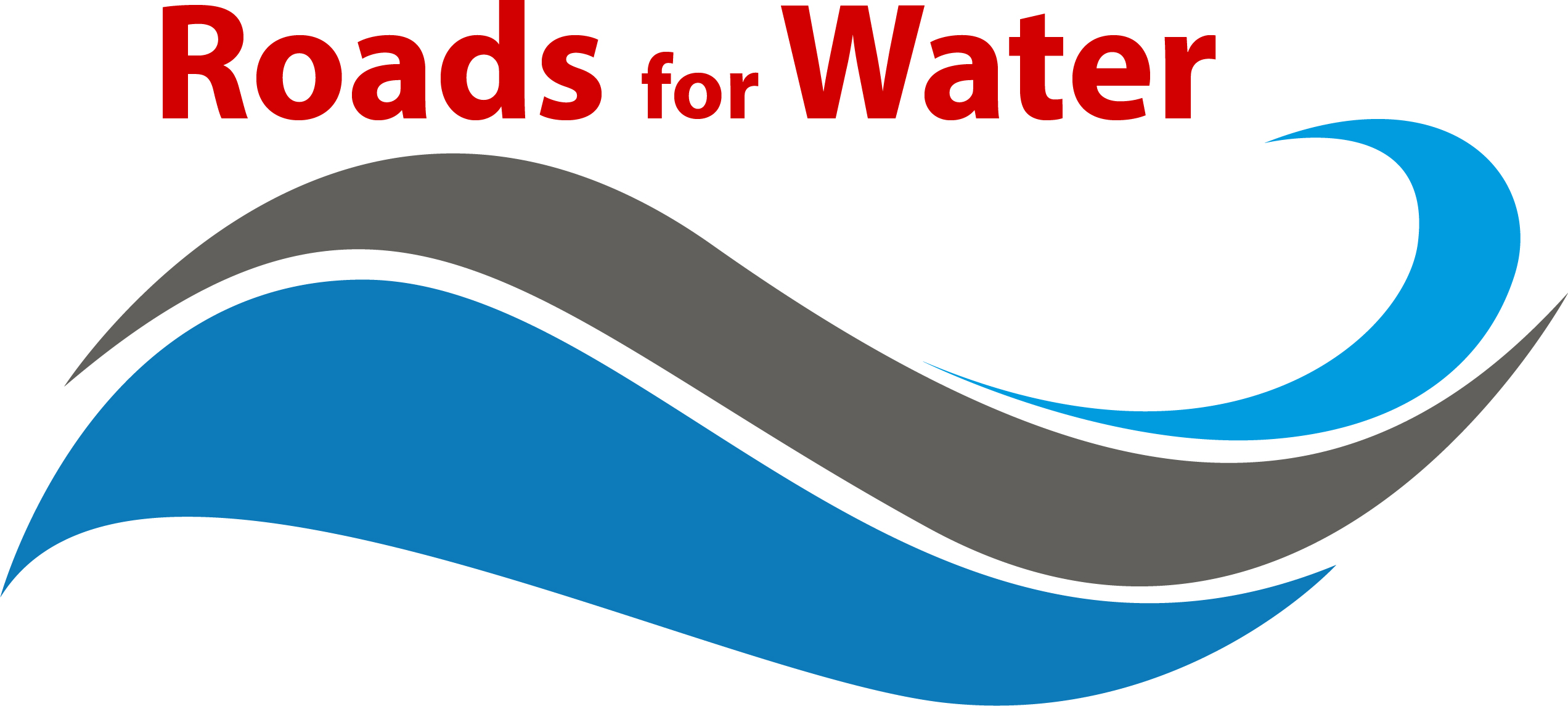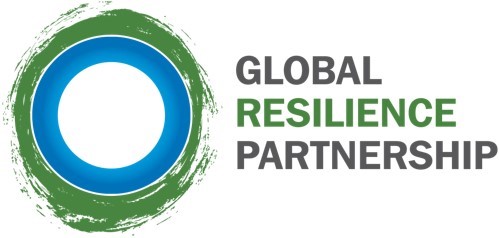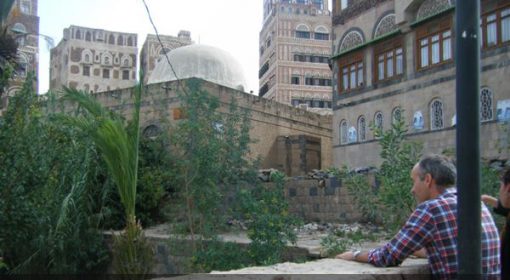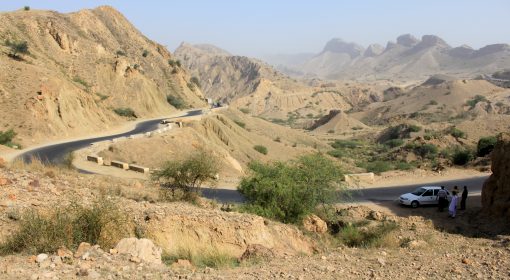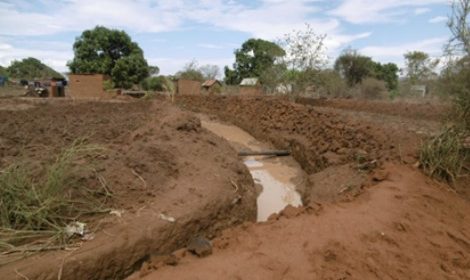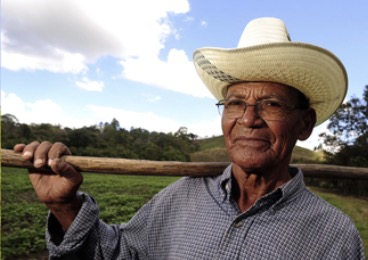The Kenyan farmer who traveled his country got inspired to harvest road water and is telling others to do the same
Posted by Nienke Harmelink
January 31, 2017
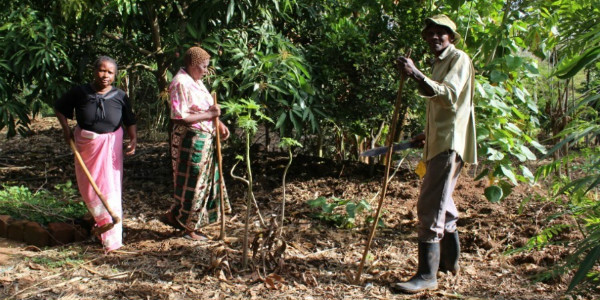 Edward on his shamba with his wife and sister in law
Edward on his shamba with his wife and sister in law
Adopting road water harvesting Edward Ndolo lives just outside of Kitui town, located in the eastern part of Kenya. He is over 60 years old, a retired police officer and lives with his wife next to their 3 acres (around 1.2 ha) sized shamba (farmland).
Edward is farming since 1967, and ever since applies terracing as a conservation technique. But because the area receives little rainfall, after his retirement he educated himself and started to practice road water harvesting in 1990. With this technique he can divert the runoff from surrounding roads to his shamba during the rainy season. What makes this case special, is that Edwards shamba is not directly connected to a road, but the road water first passes through the land of his neighbour. Edward explained to his neighbour the destructive effects of the uncontrolled road-runoff on his farmland. After that, Edward was allowed to build a channel across his neighbours’ land.“The place here, we have very small shambas. So, we cannot contain all the water on that shamba” Edward explains.
The inspiration to practice road water harvesting came from his visits to places elsewhere in the country where he was exposed to the technique. “I saw other farmers do it, so I thought it would be good for my shamba” he explains. It is nonetheless practiced by only a few farmers in the area, despite his effort to inform others about the benefits.
However, the path is not all strewn with roses. According to Edward it is hard work, and that is also one of the arguments he gets from others who refuse to adopt road water harvesting to their farming practices. Besides saying “it is very tiresome” people argue it is expensive. Edward also considers it expensive. To construct a 50 meter long channel, Edward had to spent 20.000 Kenyan Shillings (around 200 Euro), which was mostly for hiring manpower.
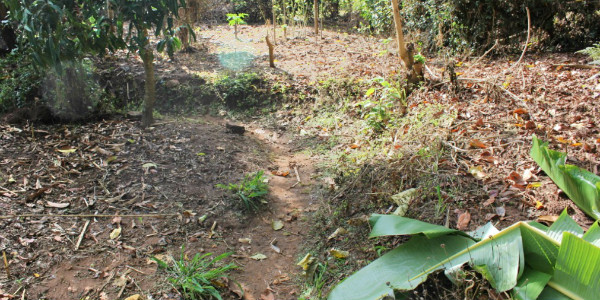 Edward diverts the water from the road to his land through this channel
Edward diverts the water from the road to his land through this channel
To get the money he was helped by his daughters, who work and live elsewhere. To prevent seepage and to efficiently capture the harvested road water, Edward is now planning to put dam liner in the channel. For this he needs polythene paper and at this moment he is not able to afford it. Therefore he is trying to see if he can apply for a loan. Despite the challenges, Edward thinks it is “a very nice job”, and in the long run costs will be regained. Besides the high costs, Edward believes there is also another aspect that prevents people from adopting road water harvesting, by arguing that individuals “can do it because they are with many. But they don’t put their mind to it. [….] I have taken it as my job and I have seen the profit of it”. The problem he observes here is that other farmers “are not using their common sense to emulate/replicate” road water harvesting and consequently may not have enough water available for their agricultural production.
Climate change, and raising awareness about being resilient According to Edwards’ observations the weather has changed. During the 1950s, 1960s, and 1970s there was plenty of rainfall, but in recent years this has changed. The long rainy season starts in Kitui usually around October he explains, but last year (2016) the rain didn’t arrive until November 1st. “So the climate has changed tremendously. And even if this pattern continues, we are not expecting to harvest. Because it is late. And the rain here finishes in December. So we are somehow worried because rain doesn’t fall when its supposed to”.
However, because Edward is making effective use of the water that does fall, his land differs in terms of productivity from those who don’t seize the opportunity. “I took it (the water, ed.) here, while some others are not getting it. […] Some of my fruits, they are very green because of that water. This place is very dry but because of taking the water from the roads and putting it here” Edwards production is high enough that it allows him to sell a share . “I profit more than my neighbours”, Edward explains. Those who do not harvest the water “come here to buy beans and maize, such things. Even fruits. [….] I get profit from them because they are buying”.
To inform other farmers about the effects of a changing climate, Edward tells them to take actions. “To store their food, because there might not be sufficient rainfall. [.…] to make them aware. [….] I tell them to not sell their products at the moment because we are not getting anything. [….] And I am taking it seriously, because I have seen the changes. [….] Some of them, they don’t listen., they are taking things too easily”. Edward considers sensitisation as very important, maybe almost like his personal mission when you read between the lines. He later explains he went to Mandera and Garissa, parts of Kenya with an arid climate. There he has seen people suffering. The exposure made him realise that the climate in Kitui is manageable when you apply some relatively simple techniques that utilises the rain optimally. “It (the climate, ed.) is not so bad that we cannot help ourselves. With a little change a big difference can be made”.
